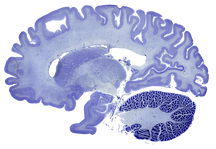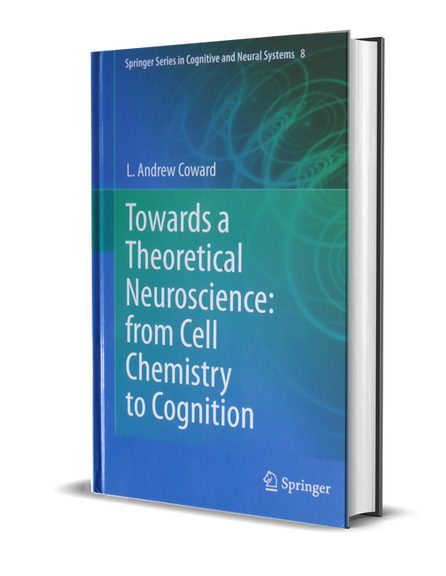about the book
This book is an academic monograph with almost 1000 references to the neuroscience literature. It explains how to understand cognition in terms of brain anatomy, physiology and chemistry, using an approach adapted from techniques for understanding complex electronic systems.
These techniques create hierarchies of information process based descriptions on different levels of detail, where higher levels contain less information and can therefore describe complete cognitive phenomena, but are more approximate. The nature of the approximations are well understood, and more approximate higher level descriptions can therefore be mapped to more precise detailed descriptions of any part of a phenomenon as required. Cognitive phenomena, the anatomy and connectivity of major brain structures, neuron physiology, and cellular chemistry are reviewed. Various cognitive tasks are described in terms of information processes performed by different major anatomical structures. These higher level descriptions are selectively mapped to more detailed physiological and chemical levels.
These techniques create hierarchies of information process based descriptions on different levels of detail, where higher levels contain less information and can therefore describe complete cognitive phenomena, but are more approximate. The nature of the approximations are well understood, and more approximate higher level descriptions can therefore be mapped to more precise detailed descriptions of any part of a phenomenon as required. Cognitive phenomena, the anatomy and connectivity of major brain structures, neuron physiology, and cellular chemistry are reviewed. Various cognitive tasks are described in terms of information processes performed by different major anatomical structures. These higher level descriptions are selectively mapped to more detailed physiological and chemical levels.
"This is the most comprehensive explanation of how neurons/brain turn stimuli into behavior and cognition that I have read. I regularly recommend it to top level neuroscience students. Too bad it is so expensive. I teach cognitive neuroscience and have gone through numerous texts. This one is not exactly easy reading so I don't use it as a textbook, but the final chapters do such an amazing job of explaining (in little fragments of neuronal networks) how the brain really works, producing mind and consciousness. It's really elegant. Highly recommend dedicating the many hours necessary to read and digest this content. You'll never again find brain-mind-cognition such a mystery.” —Amazon.com Review, 5/5 stars

